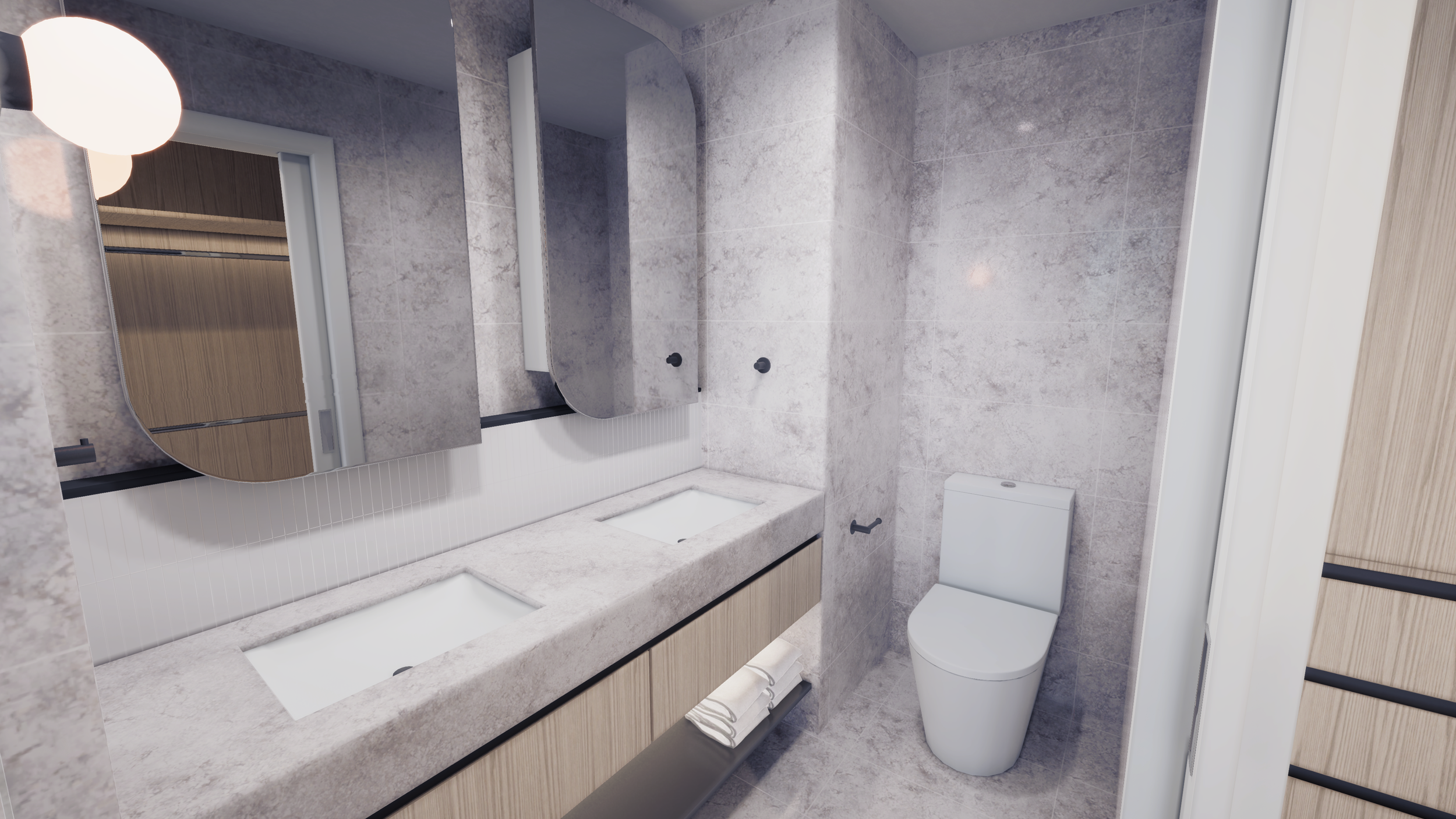
Real-Time ArchViz
PC/VR Virtual Tours & Marketing Material
What We Built
Marketing Material
Our primary job was to represent these apartments accurately while making them look as enticing as possible to prospective buyers.
We built accurate 3D representations of each unit within Unity. These could then be used to generate renders, fly-through videos, draft shots (overhead) & interactive tours for the sellers marketing showrooms.
Our focus was interactive tours. Everything else we produced was really a value-add we could do with little additional work.
Real-Time Interactive Tours
We used Unity’s HDRP with a completely static, baked lighting setup to produce the best visuals possible. We could then use tools like cinemachine to render out any additional marketing material.
We also provided custom tools that allowed clients to set up & capture renders while touring a unit in the final build.
As part of our contracts, we provided the hardware to run these tours. This was essential as it allowed us to optimize our experience for specific, high-end hardware & push the visual fidelity of our experiences. It opened up ray-tracing, DLSS & VR as a possibility.
VR Tours
The original vision of the company was VR tours & we constantly developed with this in mind. Even tethered, on high-end hardware, VR is extremely GPU intensive. Doubly so when aiming for crystal-clear views with zero aliasing.
HDRP was not built for VR & even with a completely static scene & no real-time lighting or shadows maintaining 90 frames-per-second simply wasn’t possible.
Instead, we opted for every other frame & let ATW fill in the gaps. With late-latching, & in an entirely static environment, the difference was imperceivable & let us push our render-scale further to achieve alias-free visuals.
Early Residential Work
When I first started the company had already been running for about a year. They were attempting to develop VR tours for the untethered quest 2 in URP. This is great for a lot of applications, but marketing material really needs to hit a high bar for visual fidelity.
An artist & I convinced the CEO to try a tethered build, arguing we could accomplish much more with a real GPU behind the device. He agreed, we switched to HDRP & built a demo. They took this, showed it around & landed us our first major client in West End, Brisbane.
Office Kit-Outs
Despite landing successful clients, Covid was in full force, the building industry was struggling & we were a small start-up with limited cash flow. We needed more clients to keep the lights on & tried expanding into the office space, hoping builders would pay to visualize potential kit-outs of their floor space to other companies.
At this stage, we’d cut our workforce considerably & I was the only remaining employee in Australia. I built this more or less from scratch in a few weeks, hoping we could pitch it to a builder in Brisbane.
This supported both a high-end ray-traced PC mode as well as a paired back VR mode.
Refining Our Residential
This unit was the last hail-mary I did for the company. I was trying to push the visual fidelity as far as possible with a single apartment. The majority of the improvements came from the lighting, though I built on a lot of our materials & assets too.
Up until this point, we had been using Bakery, a light-mapping add-on that is fairly well received. It never quite hit the mark, producing small artifacts & incorrect dominant baked normals. By this point, Unity’s built-in light mapper had matured & a lot of its previous issues had been resolved.
Swapping over produced much cleaner, more accurate lighting & correct dominant baked normals helped push the normal detail in the materials.
A demo build of this unit is available to try here.















